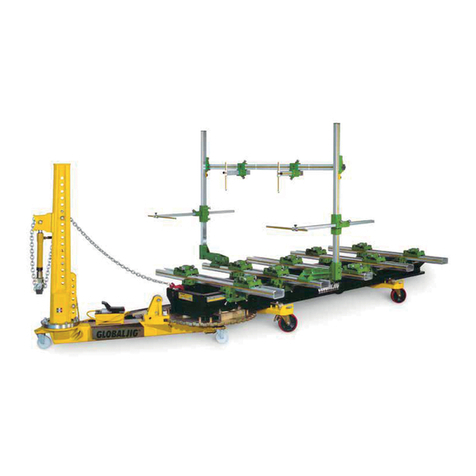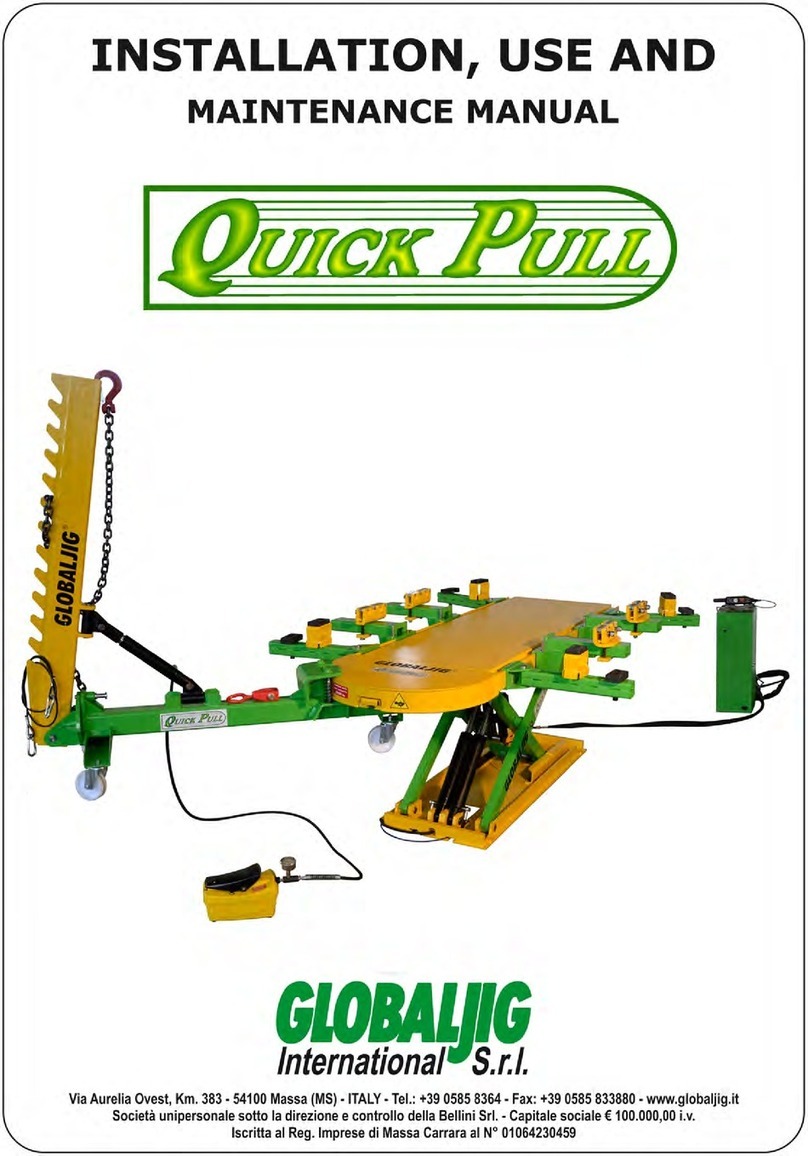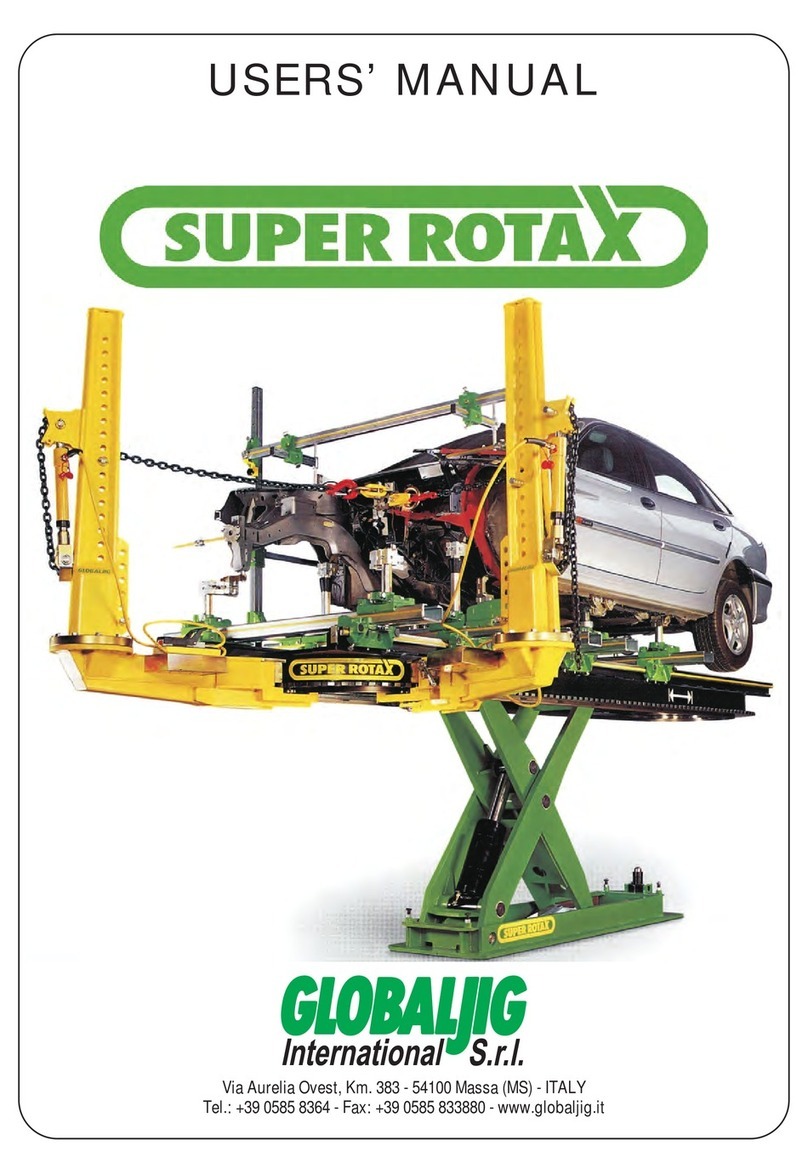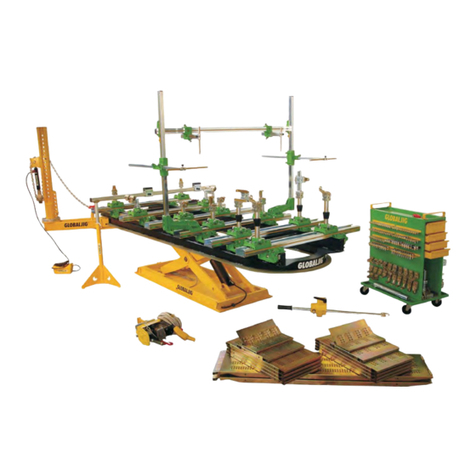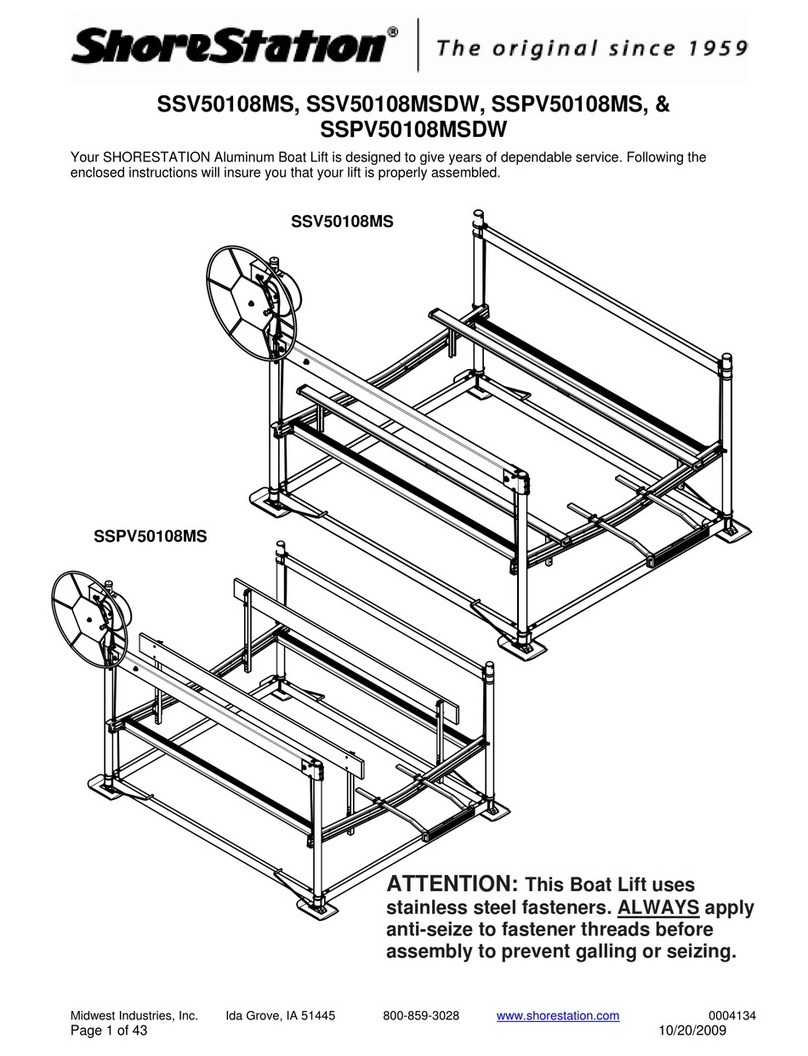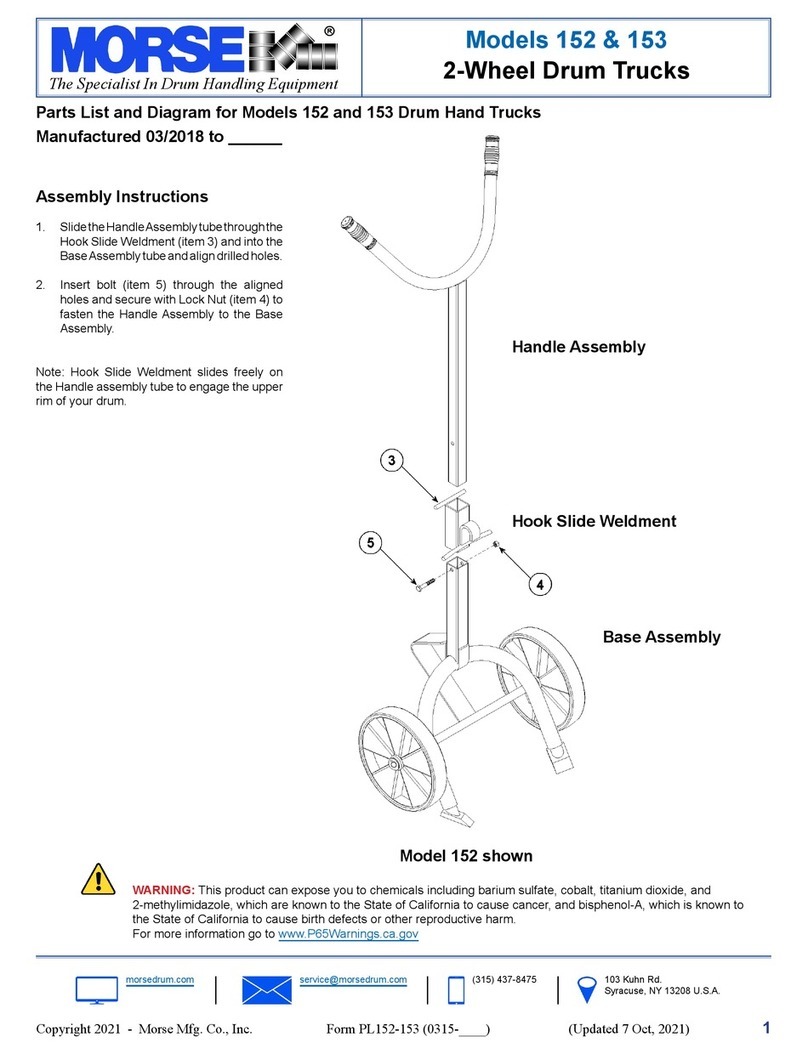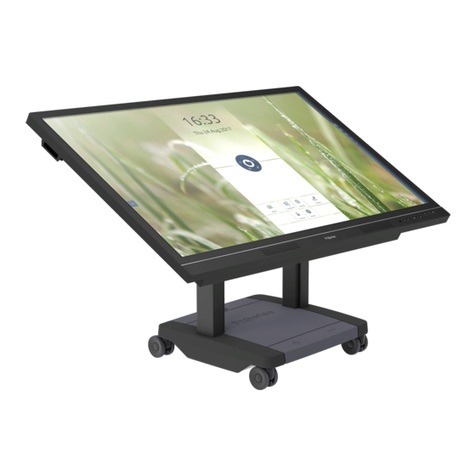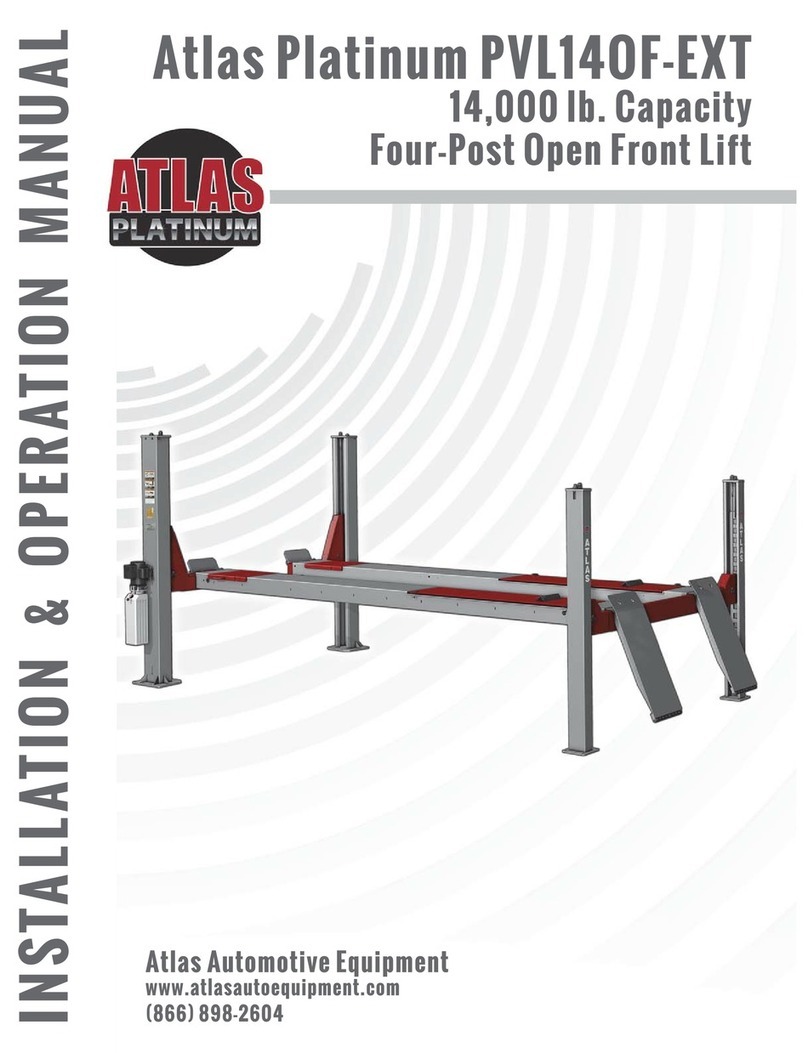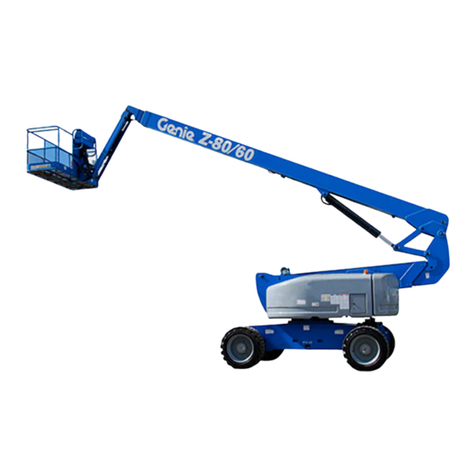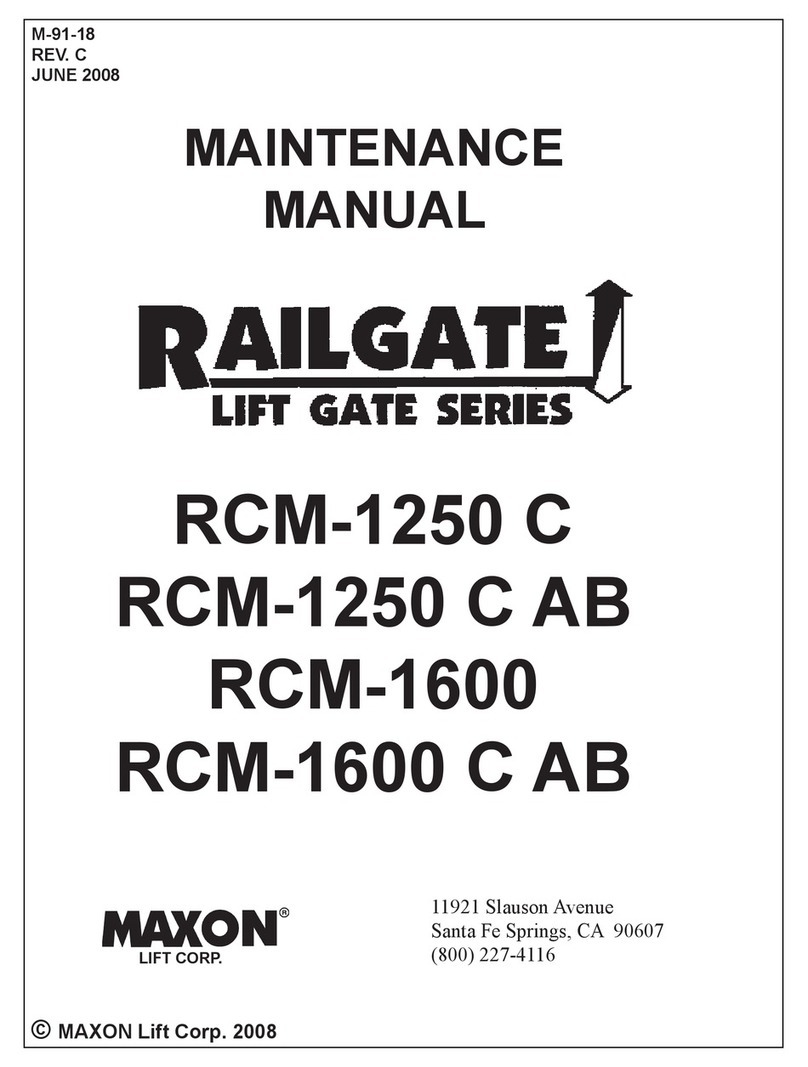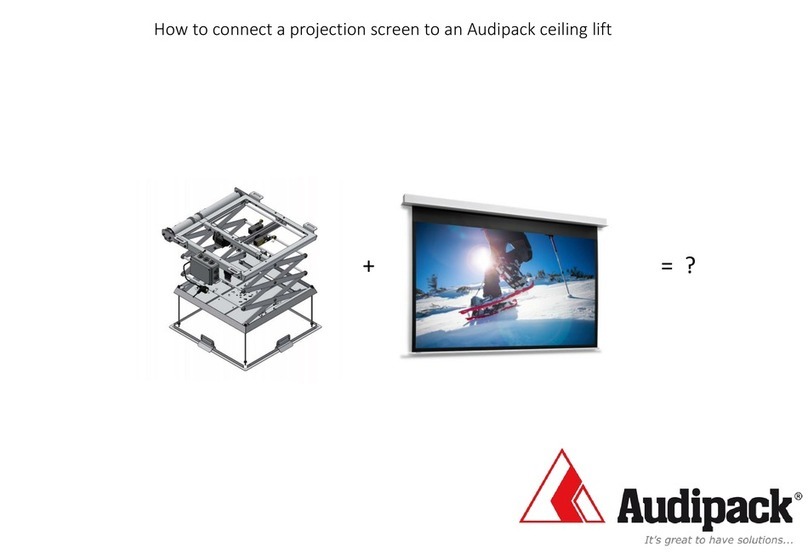Globaljig KOALA User manual



GLOBALJIG INTERNATIONAL S.r.l.
3
Index
1. USE AND STORAGE OF THE
INSTALLATION, USE AND MAINTENANCE MANUAL...........................................................................4
1.1. Purposes and intended users of the Installation, Use and Maintenance manual .................................................................4
1.2. Definitions and terminology...................................................................................................................................................4
1.3. Structure of the manual.........................................................................................................................................................5
1.4. Storing the manual................................................................................................................................................................6
1.5. Updating................................................................................................................................................................................6
2. GENERAL DESCRIPTION........................................................................................................................7
2.1. Encumbrance dimensions of the lifting platform...................................................................................................................7
2.2. User.......................................................................................................................................................................................7
2.3. Consignment.........................................................................................................................................................................7
2.4. Identification of the various versions.....................................................................................................................................8
2.5. Potential and limitations for the lifting platform......................................................................................................................8
2.6. Lifting platform orientation.....................................................................................................................................................9
2.7. Operating modes.................................................................................................................................................................10
2.8. Safety devices.....................................................................................................................................................................10
2.9. Operating indications and instructions................................................................................................................................10
3. TECHNICAL DESCRIPTION OF THE LIFTING PLATFORM.................................................................11
3.1. General information.............................................................................................................................................................11
3.2. Identification of the parts.....................................................................................................................................................11
3.3. Technical description..........................................................................................................................................................12
4. INSTALLATION OF THE LIFTING PLATFORM.....................................................................................14
4.1. Transport and handling.......................................................................................................................................................14
4.2. Storage ...............................................................................................................................................................................14
4.3. Application of the towing arm..............................................................................................................................................16
4.4. Towing arm operating positions..........................................................................................................................................17
4.5. Lifting platform installation and work area...........................................................................................................................18
4.6. Foreseen environmental operating conditions....................................................................................................................19
4.7. Installation characteristics...................................................................................................................................................19
4.8. System connections............................................................................................................................................................20
4.9. Commissioning the Koala lifting platform............................................................................................................................20
5. INSTRUCTIONS FOR USE.....................................................................................................................21
5.1. Introductory notes...............................................................................................................................................................21
5.2. Command and control devices............................................................................................................................................21
5.3. Operating procedures.........................................................................................................................................................22
5.4. Adjustments........................................................................................................................................................................23
6. SAFETY RELATED DEVICES................................................................................................................24
6.1. Introduction.........................................................................................................................................................................24
6.2. Protection devices...............................................................................................................................................................24
6.3. Residual risks......................................................................................................................................................................24
7. MAINTENANCE INTERVENTIONS.........................................................................................................25
7.1. Introductory notes...............................................................................................................................................................25
7.2. Customer assistance service..............................................................................................................................................25
7.3. Routine maintenance..........................................................................................................................................................25
7.3.1 Cleaning the lifting platform.......................................................................................................................................25
7.3.2 Checking the efficiency of the safety catch................................................................................................................26
7.4. Breakdowns or malfunctions...............................................................................................................................................26
7.5. Special Maintenance...........................................................................................................................................................26
8. SPARE PARTS INFORMATION.............................................................................................................27
8.1. General information.............................................................................................................................................................27
8.2. Components recommended to keep in stock......................................................................................................................27
9. INSTRUCTIONS FOR DISMANTLING AND DISPOSING OF THE LIFTING PLATFORM.....................28
9.1. Removing the connections of the lifting platform................................................................................................................28
9.2. Preparing the lifting platform for handling and transport.....................................................................................................28
9.3. Disposal of the lifting platform.............................................................................................................................................28
10. ANNEXES................................................................................................................................................29
10.1. List of Annexes ...................................................................................................................................................................29
11. MACHINE LOG BOOK............................................................................................................................53

GLOBALJIG INTERNATIONAL S.r.l.
4
1USE AND STORAGE OF THE INSTALLATION, USE AND MAINTENANCE MANUAL
Note: Within this document, the term LP is used to refer to the KOALA car lifting platform.
1.1 Purposes and intended users of the Installation, Use and Maintenance manual
The Installation, Use and Maintenance Manual provides the necessary indications for the correct use of the
KOALA LP and describes its physical and functional characteristics.
The manual must remain with the LP for its entire life cycle. For this reason, in the event of resale to any
third party, the manual must accompany the machine in order to ensure the safety of the operator and the
user.
The manual allows for the performance of the following operations:
INSTALLATION
USE
MAINTENANCE
DISPOSAL
It is intended for use by both the user, as well as by the operators in charge of the operations above.
Where required, the necessary qualifications are provided in section 1.2.
The company GLOBALJIG INTERNATIONAL shall bear no responsibility for any personal injury or
property damage resulting from the non-observance of the requirements contained within this manual.
The company GLOBALJIG INTERNATIONAL shall also bear no responsibility for any risks which may
arise in relation to any of the following situations:
improper use of the LP;
use which does not comply with the specific national standard;
installation which does not comply with the indications contained within this document;
lack of required maintenance;
unauthorised modifications or interventions;
use of non-original or non-specific spare parts;
non-observance of the instructions contained within this document.
The manual can no longer constitute a reference in the event that the user should intend to perform any
modifications which will alter the configuration of the LP. In such cases, the manufacturer shall only bear
responsibility in relation to any eventual manufacturing defects.
1.2 Definitions and terminology
User
Operator
LP lifting platform
The term “User” refers to any individual whose responsibilities involve the continuous use of the LP.
The term “Operators” refers to the individuals in charge of installing, operating, adjusting, servicing,
cleaning and repairing the LP.

GLOBALJIG INTERNATIONAL S.r.l.
5
The reader of this document must interpret the term “Manual”, in relation to the KOALA LP, as a reference
to this Installation, Use and Maintenance Manual.
The operations described in section 1.1 must be performed by personnel who are qualified for the specific
tasks. The qualification level refers to the activities for which the operator is authorised according to the
manufacturer’s indications.
Qualification 1
The personnel classified under this qualification level have not received specific training, but are authorised
to perform simple operations inherent to the use of the LP. This qualification authorises the operator to
perform installation, adjustment, routine maintenance and special maintenance interventions.
Qualification 2
Personnel with specific training for the performance of electrical interventions. This qualification authorises
the operator to perform installation, adjustment, routine maintenance and special maintenance
interventions. The training activities inherent to the operations listed above are carried out through training
courses with GLOBALJIG Technicians, as well as through the in-depth study of this manual.
Qualification 3
Personnel with specific training regarding electronically assisted Automatic Machinery, in charge of
performing electrical interventions. This qualification authorises the operator to perform installation,
adjustment, routine maintenance and special maintenance interventions. The training activities inherent to
the operations listed above are carried out through training courses with GLOBALJIG Technicians, as well
as through the in-depth study of this manual. To this end, the operator must be trained, through the careful
study of this Installation, Use and Maintenance Manual, for the use of the controls found on the KOALA’s
control unit. The manual contains notes which serve to draw the user’s/operator’s attention to a specific
procedure or particular operation.
Three types of notes can be found:
NOTE: these are warnings which serve to guide and optimise the operator’s actions, or else to
better highlight certain characteristics of the KOALA.
ATTENTION: these are extremely important warnings which specify actions to be performed/avoided, or
else certain precautions to be taken, prior to using the KOALA, in order to avoid damaging
the LP itself.
DANGER: these are extremely important warnings which specify actions to be performed/avoided, or
else certain precautions to be taken, prior to using the KOALA, in order to avoid personal
injury.
1.3 Structure of the manual
This manual has been drawn up based on the indications deriving from the Machinery Directive (89/392)
and the standards referred to therein. The manual is structured with:
-A data plate identification page (correlated to the specific lifting platform).
-An Index.
-Annexed documentation.

GLOBALJIG INTERNATIONAL S.r.l.
6
1.4 Storing the manual
The KOALA LP’s Installation, Use and Maintenance Manual must be available to the user at all times. For
this reason, it must be stored in an appropriate location in the vicinity of the machine, in order to allow for
the correct performance of the activities in relation to the LP.
The Installation, Use and Maintenance Manual must be stored in a location which is protected against
heat, humidity and/or any other potentially harmful environmental conditions. The integrity of the
Installation, Use and Maintenance Manual is necessary in order to guarantee accurate knowledge of the
LP’s characteristics. Its contents must therefore be verified based on that which is indicated in the index.
In the event that the manual should be lost or irreparably damaged, a duplicate copy may be requested
from the company GLOBALJIG INTERNATIONAL.
1.5 Updating
In the event that an updated version of the Installation, Use and Maintenance Manual should be issued,
the manufacturer will not be obliged to update this document, save for the case that any indications have
been added which may limit the dangers associated with the use of the LP itself.

GLOBALJIG INTERNATIONAL S.r.l.
7
2GENERAL DESCRIPTION
2.1 Encumbrance dimensions of the lifting platform
The encumbrance dimensions of the KOALA LP are illustrated in fig. 2-1 below.
Fig. 2.1
NOTE: A minimum space of 1.35 m must be guaranteed around the entire perimeter of the LP.
2.2 User
The LP’s ease of use does not require any additional qualifications with respect to those indicated in
chapter 1, section 1.2. The reading of this manual is considered sufficient in order to guarantee the
necessary knowledge for operating the LP correctly. Particular attention must be paid to the aspects
regarding Personal Safety and the Environment. Adjustments and maintenance interventions must only be
performed by operators in possession of the qualifications and authorisations outlined in chapter 1, section
1.2.
2.3 Consignment
All of the components that make up the KOALA LP, and are delivered to the Customer, are listed below:
-lifting platform
-control unit complete with mobile button panel;
-towing arm;
-4 vehicle support and anchoring arms;
-4 vehicle fastening clamps;
-6 anchor bolts for fastening the base to the ground.

GLOBALJIG INTERNATIONAL S.r.l.
8
2.4 Identification of the various versions
The KOALA LP is manufactured in various versions, distinguished by the type of electrical power supply to
which they must be connected.
The various versions include:
-- 220 / 400 V - 50 / 60 Hz tri-phase
-- 200 V - 50 / 60 Hz tri-phase
2.5 Potential and limitations for the lifting platform
- Max. capacity: ....................................................................................................2500 kg.
- Oil tank: ......................................................................................................................6 L.
- Max hydraulic pressure (with a load of 2500 kg):.................................................330 bar.
- Electrical power supply: ...........................................based on the version (see sec. 2.4)
- Electrical consumption: ......................................................................................1.85 kW.
- Compressed air supply: .....................................................................................6 - 8 bar.
- Lifting time: ........................................................................................................... 55 sec.
- Lowering time:....................................................................................................... 50 sec.
- Maximum travel height: ....................................................................................1520 mm.
- Average sound level: ......................................................................................<70 dB (A).
- Lift dimensions:
length: ...................................................................................................3030 mm.
max. length with towing arm: .................................................................4065 mm.
width: .......................................................................................................930 mm.
max. width with support brackets: .........................................................1878 mm.
maximum LP height:...............................................................................1500 mm.
- Max. height with towing arm: ...............................................................3590 mm.
- Arm dimensions:
height (with wheels): ..............................................................................2166 mm.
length: ...................................................................................................1395 mm.
width: .......................................................................................................505 mm.
- Control unit dimensions:
length: .....................................................................................................340 mm.
width: .......................................................................................................320 mm.
height: .....................................................................................................850 mm.
- LP weight with accessories: .................................................................................910 kg.
- Control unit weight: ................................................................................................41 kg.
- LP accessories: ....................................................................................................246 kg.
- Complete towing arm: ..........................................................................................230 kg.

GLOBALJIG INTERNATIONAL S.r.l.
9
2.6 “KOALA” lift orientation
The front of the lift (as indicated in the diagram) is the side containing the “lifting jacks” and the outlet for
the connections to the control unit.
Always position the heaviest portion of the load toward the front of the lift, as this will ensure the
maximum stability of the platform.
ATTENTION:
The LP is designed for the heaviest part of the load to be sustained at the front.
FRONT
HYDRAULIC
JACKS

GLOBALJIG INTERNATIONAL S.r.l.
10
2.7 Operating modes
The KOALA LP is designed for manual operation. It therefore requires the operator to perform simple
lifting, lowering and stopping operations using the appropriate button panel.
Operating conditions which could compromise the safety of the LP’s operators are not foreseen nor
expected.
2.8 Safety devices
The KOALA LP is designed and manufactured in compliance with the current applicable European
Directives and in accordance with the legal regulations deriving from them. The personnel assigned to
operating the machine are advised to work in compliance with the prescribed methods and with particular
care with regards to their individual responsibilities.
In the event that any situations should arise which are not foreseen by this manual, it is recommended to
contact GLOBALJIG’s Technical Assistance Service before proceeding. Should this recommendation not
be observed, GLOBALJIG will decline any responsibility for any unforeseeable improper use of the
machine. The topics regarding the safety devices and relative regulations are discussed in detail in chapter
6.
! DANGER ! ! !
GLOBALJIG recommends that the individual activities be performed by one
operator alone, in order to avoid simultaneously exposing more than one operator to the relative risks.
2.9 Operating indications and instructions
The electro-hydraulic control unit is furnished with a data plate (illustrated in fig. 2.3) which summarises the
most important operating instructions regarding the conduct to be observed by the operator when using the
LP itself.
INSTRUCTIONS FOR USE
-Read the instruction manual carefully before using the lift and make constant reference to it during use.
-The lift may only be used by properly trained and authorised personnel.
-It is forbidden to use the lift for any purposes other than those which are expressly indicated within the
instruction manual.
-Nobody must be permitted to climb upon the load or upon the structure of the lift under any circumstances.
-Make sure that the weight of the vehicle to be lifted and the distribution of the load comply with that which is
indicated in the instruction manual.
-It is strictly forbidden to exceed the lift’s maximum capacity.
-Check the stability of the vehicle upon the support structures before and during lifting operations.
-Closely monitor all lifting and lowering operations in order to make sure that no risks of personal injury or
property damage arise.
-Closely monitor all lifting and lowering operations in order to make sure that the lift’s movement will not be
impeded by the presence of any objects within its immediate area.
-Nobody must be permitted within the lift’s immediate area while it is in function.
-Press the mushroom-head emergency button on the remote control in the event of breakdowns or
malfunctions.
-Before performing any interventions upon the lift, set the main switch on the control unit’s control panel to its
0 (door lock) position.
-Any interventions upon the lift’s installed systems must only be performed by professionally qualified
personnel.
-The European safety directives forbid any tampering with the machine’s safety devices
Fig. 2.3

GLOBALJIG INTERNATIONAL S.r.l.
11
3TECHNICAL DESCRIPTION OF THE LIFTING PLATFORM
3.1 General information
The KOALA LP is designed and manufactured in consideration of the operational requirements of car body
mechanics within working environments like car body repair shops.
3.2 Identification of the parts
The locations of the main components which make up the LP are shown in fig. 3.1 (including accessories).
Fig. 3.1
LEGEND
1 Upper frame 8 Vertical arm
2 Base 9 Control unit
3 Lifting arms 10 Control button panel
4 Hydraulic lifting cylinders 11 Wheel support “stools”
5 Vehicle support brackets 12 Lifting pads
6 Vehicle fastening clamps 13 Complete hydraulic assembly
7 Horizontal towing arm

GLOBALJIG INTERNATIONAL S.r.l.
12
3.3 Technical description
The KOALA LP is designed and manufactured for lifting vehicles by means of its towing arm in order to
allow for the repair of the vehicle’s body work.
Its structure provides for the rapid lifting of the vehicle and is ideal for flanking more complete equipment:
jig lifts.
Physically, the LP is made up of a lower structure, comprised of the base to be fastened to the ground (2,
fig. 3.1), an upper structure (1, fig. 3.1.) and two lifting rods (3, fig. 3.1), connected in a scissor-like fashion,
which connect the upper frame to the lower frame.
The lifting movement is powered by two hydraulic cylinders (4, fig. 3.1), which are controlled by a special
electro-hydraulic control unit located inside a structure that also contains the electrical panel and the
pneumatic solenoid valve (9, fig. 3.1). The hydraulic control unit is comprised of a motor that controls a
hydraulic pump. The oil is located in the appropriate tank.
The control unit also contains a pneumatic safety release solenoid valve.
The safety catch device intervenes in the event of a hydraulic system malfunction, by mechanically
stopping the lift’s descent.
When stopping at various heights for work operations, the safety catch device will slide into one of the
notches on the base, illustrated in fig. 3.2. The user can press an appropriate button to activate, by means
of a solenoid valve, the cylinder that raises the safety catch device (thereby disengaging the safety
system). Upon releasing the button, the safety device will automatically be re-activated.
Fig. 3.2: 1) Control cylinder, 2) Safety catch device, 3) Hooking notches, 4) Base, 5) Lifting arm

GLOBALJIG INTERNATIONAL S.r.l.
13
A special electric limit switch acts upon the movement of the lifting arms and deactivates the hydraulic
control unit when the platform’s maximum height has been reached. In addition to the previously described
safety blocking system, the upper frame of the lift is equipped with two brackets, or support feet, with a
special blocking/releasing system (fig. 3.3).
When the upper frame is raised off the ground, the bracket rotates into the position illustrated in the
diagram. These brackets, or support feet, serve two purposes (platform lowering):
-safety, for protection against the crushing of the lower limbs.
-operational, for the insertion and fastening of the towing arm at an optimal height.
In order to command the complete descent of the lift, the
operator must intervene upon the bracket by raising the
lift a few centimetres and rotating the two brackets
towards the internal portion of the lift until they are in a
horizontal position. Finally, the brackets must be pushed
towards the outside of the lift until the pin can be inserted
in the appropriate slot to lock the bracket in its horizontal
position.
This system is, however, automatically activated each
time the LP reaches the ground.
Safety engaged Safety disengaged
Fig. 3.3
If a vehicle is present upon the lift, the operator must disarm the brackets before beginning the descent; in
this case, the danger of crushing the lower limbs beneath the upper frame is not present as the vehicle
itself protrudes from each side of the frame.
The upper frame is made up of rectangular cross-section steel profiles and is appropriately shaped to
facilitate the installation of the various accessories (vehicle support brackets and towing arm). The
installation operations must be performed by the user, following the indications provided in chapter 4 of this
manual; the usage procedures are described in chapter 5.
The towing arm is equipped with a hydraulic cylinder, controlled by a pneumo-hydraulic pump, that allows
for the vehicle to be towed by means of a chain and hook (13, fig. 3.1). The chain is also equipped with a
safety cable in order to prevent personal injury in the event that any of the links should break.
LEGEND
1Support foot
2Pin
3Fastening support with lock/release system

GLOBALJIG INTERNATIONAL S.r.l.
14
4. INSTALLATION OF THE LIFTING PLATFORM
4.1. Transport and handling
The KOALA LP’s packaging elements for transport and handling include the following:
1 wooden pallet containing the LP. Gross weight: approx. 930 kg
1 crate containing the electro-hydraulic control unit. Gross weight: approx. 47 kg
1 crate containing the towing arm and other standard accessories. Gross weight: approx. 500 kg
For the handling of the complete consignment, it is necessary to use a forklift with a minimum capacity of
1500 kg. The forklift must have forks of at least 1.5 m in length.
The same holds true for the ground-based handling of the LP, once it has been unpacked, as it does not
come supplied with any accessories useful for its handling. The hydraulic control unit must likewise be
lifted using a forklift, but is equipped with appropriate wheels for ground transport. In order to lift the lifting
platform after it has been unpacked, tie the strap as shown in fig. 4.1.
! ! ATTENTION! !
If using a bridge crane for the lifting and handling operations, maximum care
must be taken to avoid impacts and jolts, as well as sudden accelerations or decelerations
which could cause the lift to become unbalanced.
4.2. Storage
The LP is designed for storage in environments which meet the following requirements:
-Room temperature between -25°C and + 55°C for prolonged storage periods and -25°C and + 70°C
for storage periods of less than 24 hours;
-Relative humidity between 30% and 95% (without condensation).
Storage locations which do not meet the above requirements may not be used.

GLOBALJIG INTERNATIONAL S.r.l.
15
4.3.

GLOBALJIG INTERNATIONAL S.r.l.
16
4.3.Application of the towing arm
! ! ATTENTION! !
Before connecting or disconnecting the towing arm, make sure that the horizontal element
is aligned with the articulated element (see photo 1).
Failure to respect this indication could result in personal injury or property damage.
-Raise the LP so that the
"support feet" are in their
vertical position (properly
engaged).
-Lower the LP so that it rests
upon the "feet" (see photo 2).
-Position the towing arm upon
the frame (see photo 3).
-Raise the LP so that the
towing arm remains
connected to the edge of the
frame and the wheels are
lifted off the ground (see
photo 4).
-Use the two pins (protruding
from the side) to manually
raise the lower connector
until it makes contact with the
frame (see photo 5).
-Insert the wedge (with the
round profile facing down)
into the slot on the right,
indicated with the label IN
(see photos 6 and 7).
-Use a hammer to firmly block
the wedge in place (see
photo 8).
Support foot
Photo
Photo
Photo
Photo
Photo
Photo
Photo
Photo

GLOBALJIG INTERNATIONAL S.r.l.
17
4.4. Towing arm operating positions
-In order to adjust the position to the right
or left, remove the two pins (see photo 2)
and align the arm (see photo 3) blocking
one of the two connection rods with the
pin(see photo 4).
“Straight" towing position, or rather
perpendicular to the frame (see photo 1).
The two connection rods (A42680) must
be applied as a pair (with the A42704
pins).

GLOBALJIG INTERNATIONAL S.r.l.
18
4.5. Lifting platform installation and work area
The LP’s working position must be determined in consideration of the fact that the hydraulic control unit’s tube for
connecting to the LP is 3.5 m in length and connects to the front, on the opposite side to that upon which the vehicles
are loaded.
Perform the following connections:
Flexible oil supply tube (unscrew the male / female caps)
Air tube
Limit switch cable
Connect the electrical power supply (230/400 V - 50/60 Hz tri-phase; or 200 V - 50/60 Hz tri-phase) to the
control unit by means of the appropriate socket.
! NOTE !
For the assembly and use of the vehicle support arms
and the other parts to be inserted upon them,
see the procedures described in chapter 5.
Support base
m. 2.055 x 0.75
Work area
encumbrance
measurements
Towing arm
Towing arm

GLOBALJIG INTERNATIONAL S.r.l.
19
4.6. Foreseen environmental operating conditions
The KOALA LP is designed for indoor use.
Therefore, the environmental parameters to be used as a reference are the following:
temperature between +5°C and +40°C
humidity between 30% and 95% (without condensation)
The LP’s operating environment must also meet the following requirements:
The roof of the structure must be sufficiently high so as to allow for the complete lifting of any vehicle
without causing damage.
It is recommended to verify this height when it using the lift with special vehicles.
The flooring upon which the lift is installed must be smooth and level (therefore free of any slopes and/or
roughness).
The unsuitability of the floor’s surface could lead to dangerous situations when working with the LP and
when moving the LP upon the floor while loaded.
The LP is not designed for use in environments with characteristics other than those which are described
above.
! ! ATTENTION! !
The use of the LP in environments or situations which are not
foreseen within this manual shall exonerate the company
GLOBALJIG from any responsibility regarding the use in question.
4.7. Installation characteristics
The KOALA LP must be installed upon perfectly smooth and horizontal flooring (see characteristics on page 37).
The LP must be properly fastened to the floor using the 6 supplied anchoring bolts.
In order to function properly, the LP must be connected to an external pneumatic and electrical energy supply
with the following characteristics:
Electrical power supply provided through an industrial electrical outlet, with a power supply voltage equal to
that which is required for the specific version. Specifically:
240/415 V tri-phase + ground and a frequency of 50 Hz ± 2%; the maximum foreseen consumption is
1.1 kW; the grounding wire must have a minimum cross-section of 2.5 mm²;
200/230 V tri-phase + ground and a frequency of 50/60 Hz ± 2%; the maximum foreseen consumption is
1.1 kW; the grounding wire must have a minimum cross-section of 2.5 mm²;
!!! DANGER !!!
The customer is required to install a three-pole circuit breaker, with a loss
sensitivity of 30 mA, upstream from the LP (within the building’s power panel)
in order to ensure that the power supply will be automatically cut off
in the event of an isolation failure regarding the LP itself.

GLOBALJIG INTERNATIONAL S.r.l.
20
4.8. System connections
HYDRAULIC:
Use two wrenches to remove the caps (male / female) from the fittings of the flexible tubes (A71049and
A71050) and connect them together (photos 1, 2 and 3).
COMPRESSED AIR:
Connect the flexible tube (A70178) with the quick connector (A70185), from the control unit, to the tube
from the lift (A70179).
Connect tube A70177, complete with it's 1/4" female quick connector fitting A42747, to the compressed
air supply.
ELECTRICAL (raising limit switch):
Connect the plug and outlet of the cables from the control unit and the lift.
! ! ATTENTION! !
The incorrect or omitted connection of these elements will impede the lift’s ascent functionality for safety reasons.
4.9. Commissioning the Koala lifting platform
After having performed all of the system’s connections as described above, press the raise button on the remote
control (fig. 5.1).
If the direction of rotation (RST) of the phases is correct, the LP will rise.
If the LP does not move and the control unit’s motor “turns”, release the button immediately; the motor’s direction
of rotation is incorrect and the pump could be damaged.
Invert the plug’s phase wires and repeat the operation.
(
Lift
)
(
Lift
)
(Control unit)
(
Lift
)
(Control unit)
photophoto
photo
Table of contents
Other Globaljig Lifting System manuals
Popular Lifting System manuals by other brands
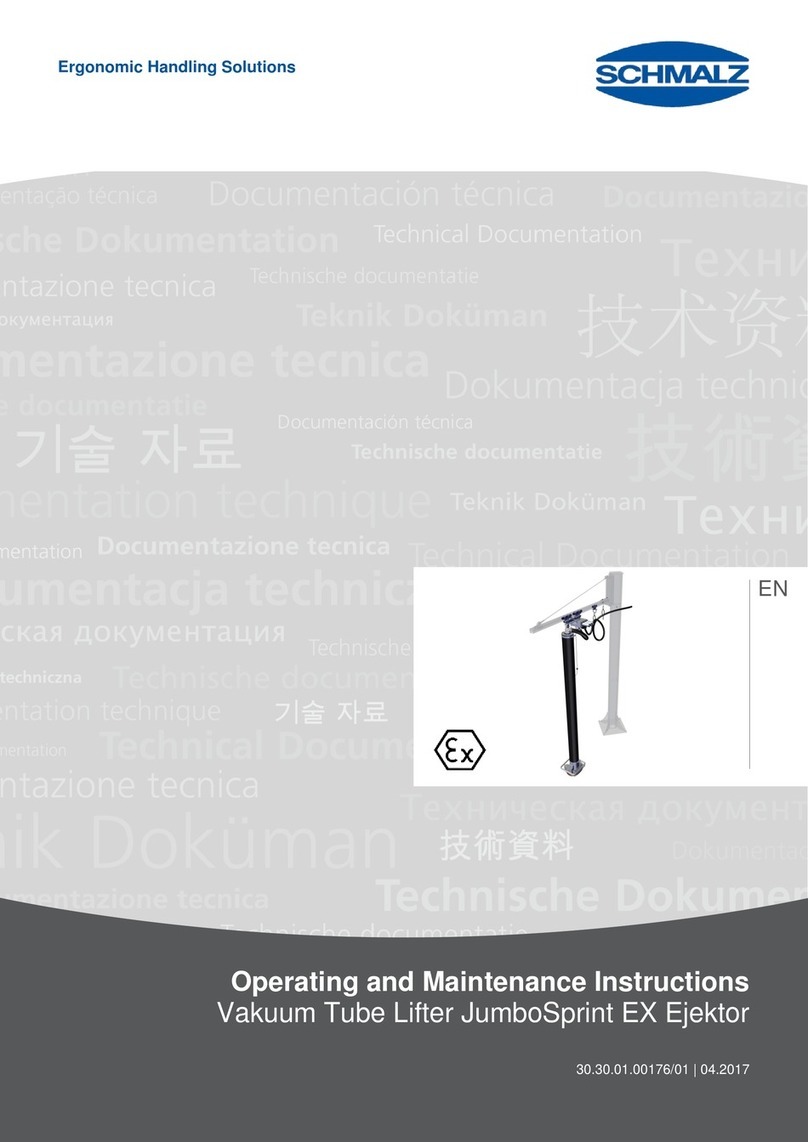
Schmalz
Schmalz Jumbo Sprint 45 Operating and maintenance instructions

Pacific Hoists
Pacific Hoists My-T-Lift manual

Ingersoll-Rand
Ingersoll-Rand BHD15 instruction manual

Challenger Lifts
Challenger Lifts 44000 Installation, operation & maintenance manual
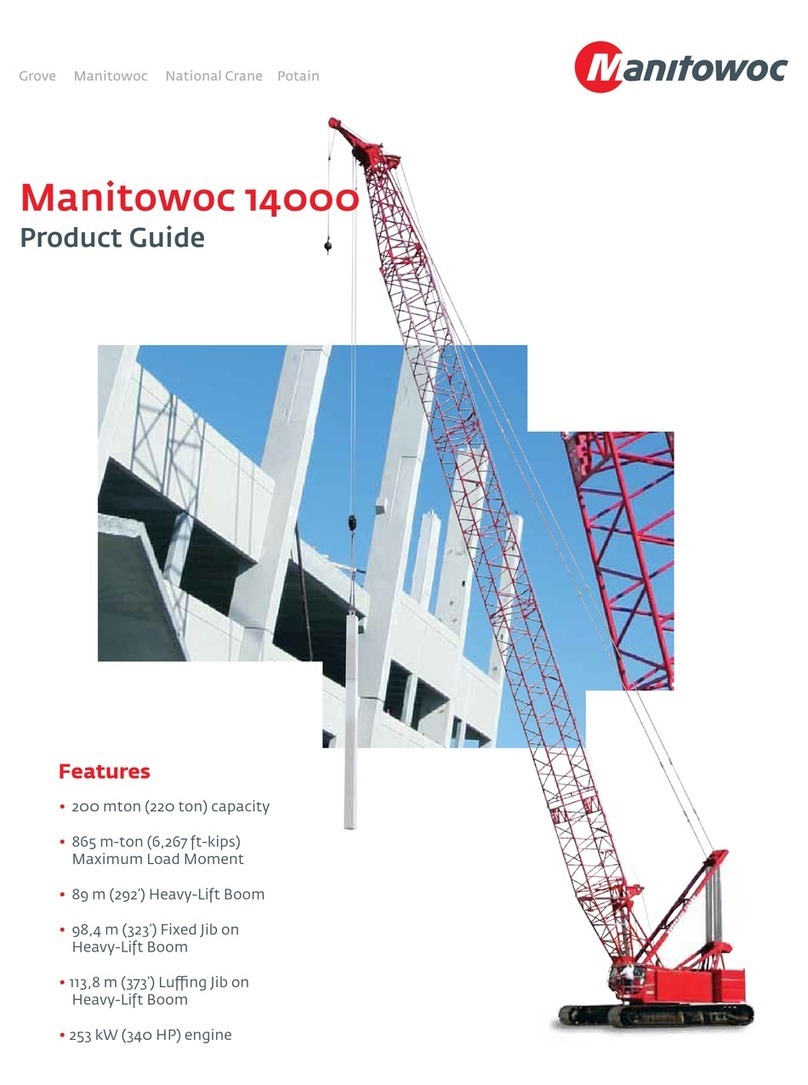
Manitowoc
Manitowoc 14000 Product guide

LiftSmart
LiftSmart MLI Parts and service manual
